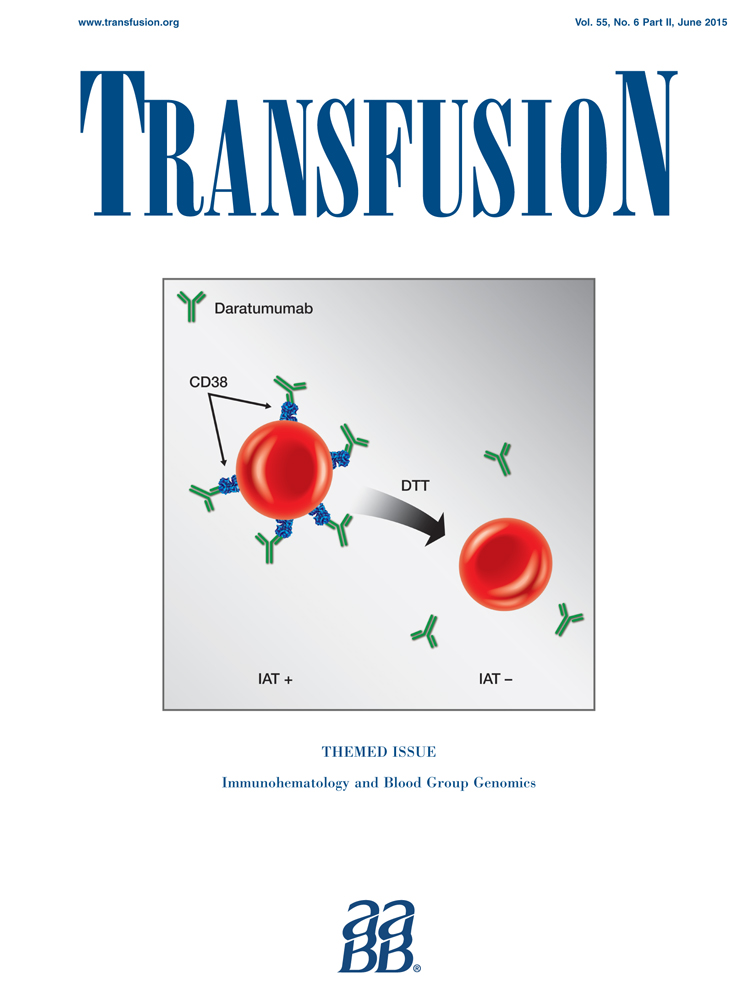RHD variants in Flanders, Belgium
Abstract
Background
D antigen variants may be grouped into partial D, weak D, and DEL types. Cumulative phenotype frequencies of these D variants may approach 1% in certain European regions. Unambiguous and quick identification of D variants is of immediate clinical relevance, with implications for transfusion strategy.
Study Design and Methods
A total of 628 samples with ambiguous serologic results from different immunohematology laboratories throughout the Flanders region, Belgium, were genotyped using a commercially available weak D typing approach. After exclusion of detectable weak D types, molecular RHD exon scanning was performed for the remaining samples, and RHD sequencing was performed in two particular cases.
Results
Of all samples investigated, 424 (67.5%) were positive for weak D Type 1, 2, or 3, and 22 cases (3.5%) typed weak D Type 4.0/4.1/4.3, 4.2, 5, 11, 15, or 17. Another 49 (7.8%) samples were partial D variants, with a major proportion being category DVI types (n = 27). One RHD(S103P) sample was identified as high-grade partial D, with DIII-like phenotype and anti-D and anti-C immunization. Additionally, a novel DVI Type 3 (A399T) variant was found. Of the remaining 133 samples mainly tested because of ambiguous serologic D typing results due to recent transfusion, 32 (5.1%) were negative for RHD, and 101 (16.1%) were indistinguishable from wild-type RHD and not investigated further.
Conclusion
Despite the enormous diversity of RHD alleles, first-line weak D genotyping was remarkably informative, allowing for rapid classification of most samples with conspicuous RhD phenotype in Flanders. The clinical implications are discussed.




